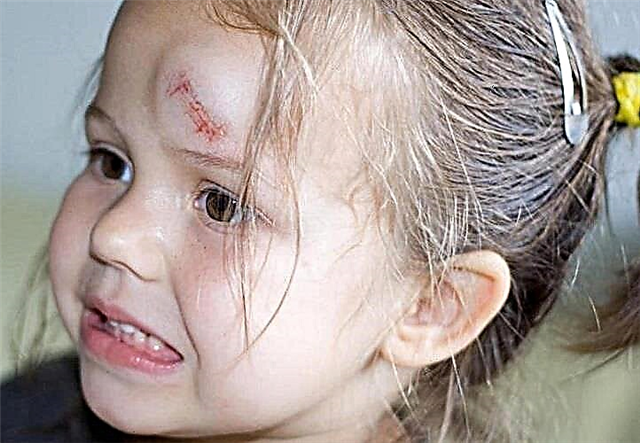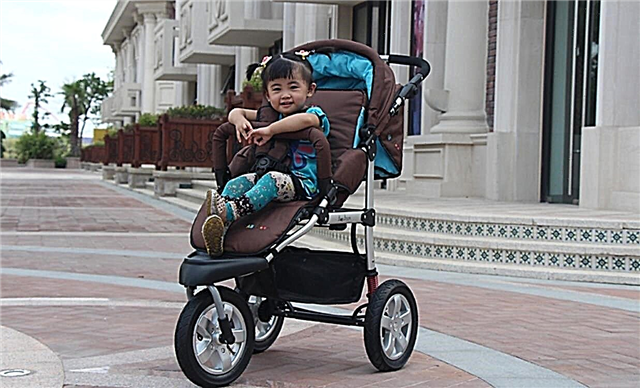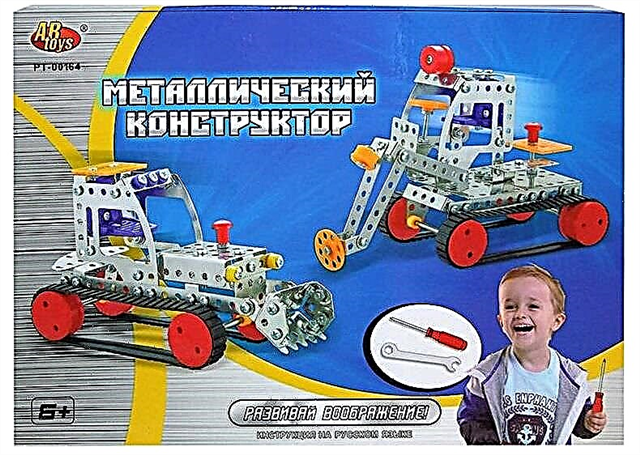When a toddler's temperature rises, it is impossible to stay idle. Each parent should know what to do if the child's temperature does not go astray 39. A similar problem often arises and each time causes panic among young mothers and fathers. In such cases, inexperienced parents do not know what to do to make their baby feel better. In addition, it is very important not to harm the child, because adults are afraid to commit wrong actions.

High fever in a baby
Why does the high temperature not go astray?
It often happens that medications are useless against a high temperature in a small child. The reason for this may be a serious infectious disease, so the best solution is to see a doctor. The specialist will determine the exact cause and prescribe adequate treatment.
At the same time, such a reaction is not always a consequence of a dangerous state of health. According to doctors, one medication may not work in a certain case, so after a while it is worth giving the child another drug for the same purpose. Most often, this method turns out to be effective, and the temperature begins to gradually decrease.
Hyperthermia in infants
There are two types of hyperthermia: "red" and "pale" (fever). In young children, the first variant of a high temperature is more often observed. This condition is characterized by the following symptoms:
- Moderately reddened skin;
- The skin is warm and moist;
- Hands and feet are warm;
- Rapid breathing and pulse;
- The child behaves in the usual way (even if the readings on the thermometer are high enough);
- Antipyretic drugs are effective.
"Pale" hyperthermia is characterized by the following features:
- Pallor of the skin (marbled color);
- Hands and feet are cold;
- Too fast pulse and excessive shortness of breath;
- The behavior of the crumbs changes - he becomes lethargic, indifferent, or, conversely, excited;
- Convulsions are possible;
- The child feels chills (goose bumps);
- Antipyretics have insufficient effect;
- The child's temperature does not go astray for several days.
The following factors can increase the temperature in a child:
- Infectious diseases. This includes influenza, SARS, cystitis, pyelonephritis, rubella, measles, chickenpox, whooping cough, and other childhood diseases. Also, the accumulation of pus in the child's body can provoke hyperthermia.
- Acute inflammations: pneumonia (possibly asymptomatic course of the disease, except for hyperthermia itself), stomatitis, infective endocarditis (provoking factors are angina, flu).
- Endocrine system pathologies, in particular, hypothalamic syndrome.
- Malignant neoplasms. In some cases, a rise in temperature is the only sign of tumor formation in the body. In particular, it can be a symptom of leukemia, lymphocytic leukemia.

"Pale" and "pink" hyperthermia in infants
Why temperature is dangerous 39
Hyperthermia is dangerous for a small child and in some cases can be fatal. High temperature speeds up metabolism, increases blood circulation, increases heart rate. As a result, the load on the heart increases. In addition, against the background of the listed symptoms, dehydration of the body occurs, the functioning of the nervous system is disrupted (which manifests itself in the form of seizures). Also, under the influence of high temperature, the blood becomes viscous, which leads to the formation of blood clots.
Hyperthermia is especially dangerous for babies in the first 3 months of life, as well as for patients (including children) with pathologies:
- Heart and blood vessels;
- Nervous system;
- Respiratory organs;
- Endocrine system.
A temperature of 39 °, which occurs against the background of influenza or ARVI, lasts for 2-3 days. This period may increase in the case of the development of diseases such as otitis media, tonsillitis, sinusitis, pneumonia.
Good immune protection contributes to the rapid stabilization of temperature indicators. However, in young children, immunity is not sufficiently developed and has not yet had time to get stronger. Therefore, the younger the child, the longer it takes for him to recover.
Reasons for an urgent temperature drop
In accordance with the WHO recommendations, antipyretic therapy is necessary at a body temperature above 38.5 °. At the same time, if the baby, in addition to fever, has a general deterioration in health (chills, pallor of the skin, muscle pain occur), the temperature reduction should be started immediately.
Also, urgent action to eliminate fever is taken in such cases:
- The child does not tolerate high temperature;
- The baby has nervous system pathologies;
- Body temperature exceeded 39 degrees.
How to lower the temperature in babies
To bring down the temperature of the baby, special antipyretic drugs are used: Paracetamol, Ibuprofen. These drugs can be given to children almost from birth (drugs are the most effective and safe for use in pediatrics).
To understand which medicine is right for a particular case, you need to find out what works best for a particular child. Doctors cannot give more precise recommendations, since the effectiveness of the drug depends on the individual tolerance of the drug by the child's body.
The form of administration of the medication depends on the age of the child and the clinical picture of the disease. For example, if there is vomiting, the best option would be to use rectal suppositories, if the child has loose stools, then suspensions (syrups) are suitable. Older children can be given pills.

Children's Ibuprofen
If antipyretics work poorly
What if the child's temperature does not drop? Most often, the ineffectiveness of antipyretic drugs is due to a lack of fluid in the body (the child has nothing to sweat with). Another reason is the poor choice of the dosage form. For example, a candle will not have the proper effect at temperatures above 38.5 degrees (the drug is not absorbed into the blood). Then you need a liquid form diluted with plenty of water.
Important! Many parents mistakenly assume that after taking an antipyretic drug, the temperature from 39 degrees should almost immediately drop to 36.6. In fact, drugs cannot work as effectively. Usually, the temperature drops by only 1-2 divisions within an hour, to a lower level, up to normal (that is, by 2.5 divisions), it can only go down with time. Parents do not know this and think that the medicine is not working.
If, after taking an antipyretic, the temperature does not drop for a long time, you should call a doctor at home. At the same time, you do not need to panic and immediately call an ambulance.
Helping the child before the ambulance arrives
Before the arrival of doctors, you must do the following:
- Give your child plenty of fluids. This measure will prevent dehydration and allow your baby to sweat normally.
- Provide good ventilation of the room, keep the air in the room cool (16-18 degrees). The humidity should be 50-70%.
- If a child has pale skin, then it is recommended to wrap the baby in warm clothes. If the baby's skin is pink, then there should be a minimum of clothes (while the baby should not freeze).
- At temperatures above 39 degrees and a slight violation of nasal breathing, it is recommended to use drops to narrow blood vessels.
- Give the child an antipyretic agent.
When to call a doctor
There are a number of signs accompanying hyperthermia in a child, the presence of which is a reason for calling a doctor at home:
- A baby is 3 months old or younger and has a rectal temperature of 38 degrees or higher;
- Temperature rise up to 40 degrees;
- The indicator is kept at around 39 and does not get lost with the help of drugs, even by several divisions (for example, up to 38 degrees);
- The baby has a petechial rash;
- The child has a severe headache, there is a stiff neck (such symptoms may indicate meningitis);
- The baby is showing signs of dehydration;
- The baby cries all the time;
- The high temperature appeared on the 7th day of illness;
- The hyperthermia reappeared 1–2 days after it became normal;
- The child has nausea and vomiting.
After the ambulance arrives
Upon the arrival of the doctors, it is necessary to describe in detail the child's condition during the entire period of his illness. The information will help doctors take appropriate action.
Important! After calling an ambulance, there is a risk of injecting the child with lytic formula. The medicine is effective and quickly brings down the heat. However, the tool has a number of side effects and does not allow you to see the exact picture of the disease.
How the temperature cannot be brought down
At a high temperature, the child is not allowed:
- To resort to rubbing the body with alcohol-based liquids or vinegar. To do this, it is better to use plain water at room temperature (wipe the neck, back of the head, groin area, armpits);
- Try to cool the child's body with a cold bath, applying cold objects, wrapping in wet cloth (if these measures are not prescribed by a doctor);
- Wrapping the baby too tightly, as this can lead to additional overheating (tight clothing is not required if the baby's legs and arms are pink and warm to the touch).

It is not recommended to wipe the crumb
What Dr. Komarovsky advises
The well-known children's doctor, Evgeny Komarovsky, reminds that it is better not to bring down the temperature by cooling the child's body by various physical methods (ice heating pads, cold enemas, baths, etc.) The fact is that when in contact with cold, a spasm of skin vessels occurs. As a result, blood flow slows down, sweat formation is reduced, which leads to a decrease in heat transfer.
The doctor also prohibits rubbing the skin with alcohol and vinegar - if the baby sweats, then the temperature will drop in any case. It is pointless to rub dry skin even with plain water.
Council. A child with a high temperature should be given plenty of fluids. The recommended drink for a baby of the first year of life is a decoction of raisins. A one-year-old child can be soldered with dried fruit compote.
The doctor also gives advice to parents on how to determine if the baby has vasospasm. To do this, you need to analyze the state of the child's heel: if it is warm and pink, then there is no spasm. In this case, rectal suppositories will be effective even at temperatures above 39.5 degrees.
The reasons why the child's temperature does not drop to 39 may be different. Some of them pose a danger to the health and even the life of the baby, others are completely harmless. One way or another, in order to eliminate the likelihood of complications, it is better to consult a pediatrician.



